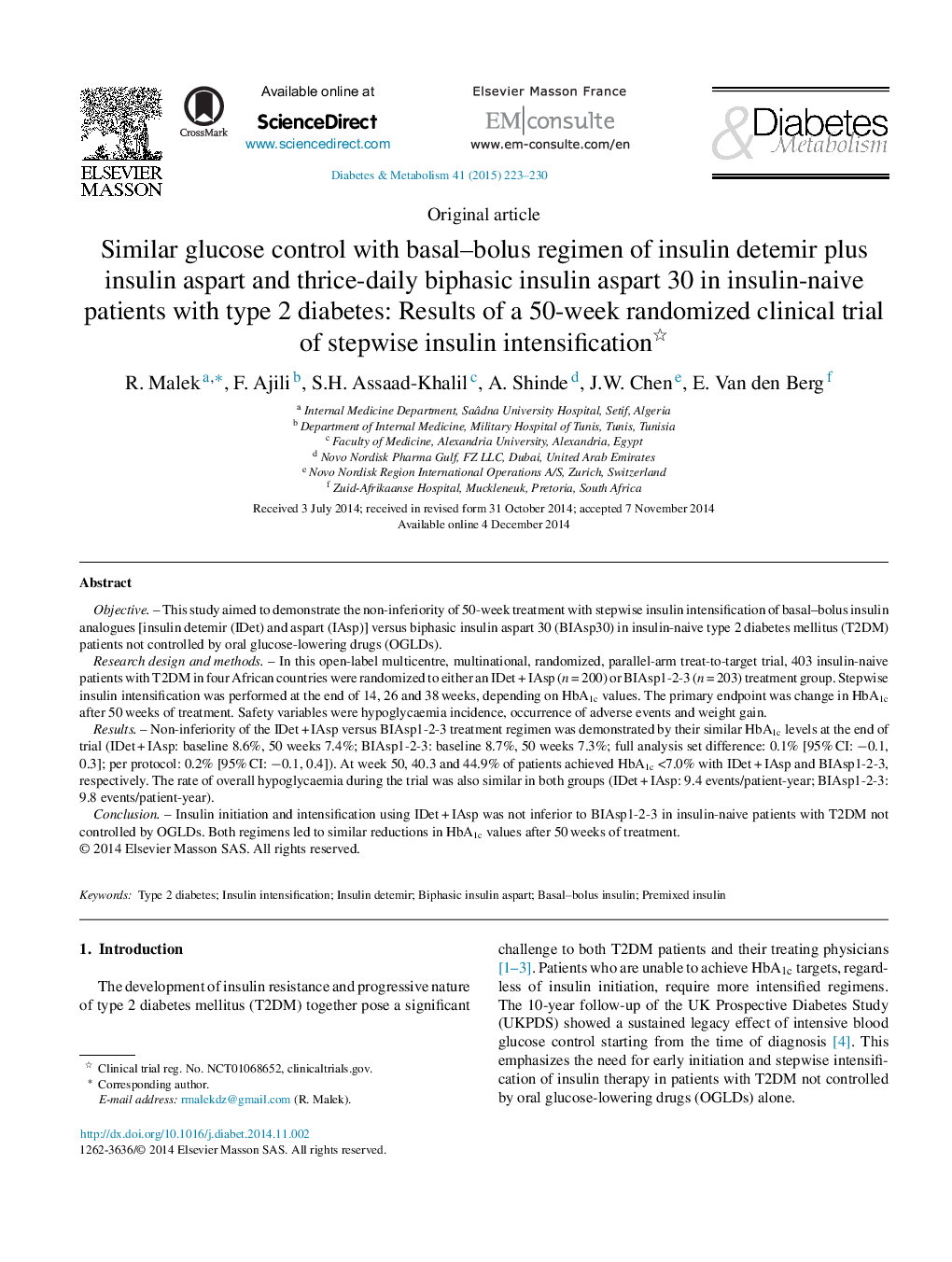| Article ID | Journal | Published Year | Pages | File Type |
|---|---|---|---|---|
| 3259055 | Diabetes & Metabolism | 2015 | 8 Pages |
ObjectiveThis study aimed to demonstrate the non-inferiority of 50-week treatment with stepwise insulin intensification of basal–bolus insulin analogues [insulin detemir (IDet) and aspart (IAsp)] versus biphasic insulin aspart 30 (BIAsp30) in insulin-naive type 2 diabetes mellitus (T2DM) patients not controlled by oral glucose-lowering drugs (OGLDs).Research design and methodsIn this open-label multicentre, multinational, randomized, parallel-arm treat-to-target trial, 403 insulin-naive patients with T2DM in four African countries were randomized to either an IDet + IAsp (n = 200) or BIAsp1-2-3 (n = 203) treatment group. Stepwise insulin intensification was performed at the end of 14, 26 and 38 weeks, depending on HbA1c values. The primary endpoint was change in HbA1c after 50 weeks of treatment. Safety variables were hypoglycaemia incidence, occurrence of adverse events and weight gain.ResultsNon-inferiority of the IDet + IAsp versus BIAsp1-2-3 treatment regimen was demonstrated by their similar HbA1c levels at the end of trial (IDet + IAsp: baseline 8.6%, 50 weeks 7.4%; BIAsp1-2-3: baseline 8.7%, 50 weeks 7.3%; full analysis set difference: 0.1% [95% CI: −0.1, 0.3]; per protocol: 0.2% [95% CI: −0.1, 0.4]). At week 50, 40.3 and 44.9% of patients achieved HbA1c <7.0% with IDet + IAsp and BIAsp1-2-3, respectively. The rate of overall hypoglycaemia during the trial was also similar in both groups (IDet + IAsp: 9.4 events/patient-year; BIAsp1-2-3: 9.8 events/patient-year).ConclusionInsulin initiation and intensification using IDet + IAsp was not inferior to BIAsp1-2-3 in insulin-naive patients with T2DM not controlled by OGLDs. Both regimens led to similar reductions in HbA1c values after 50 weeks of treatment.
